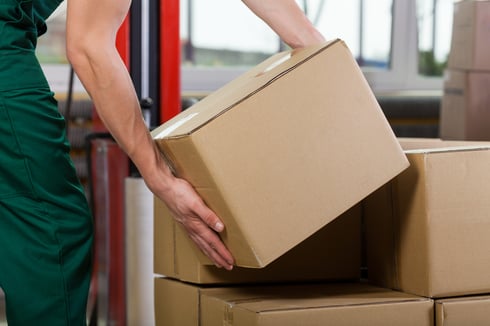Automation is a delicate balance between budget, need, labor, space, and flow. The benefits of automation can differ significantly based on the type of facility you run. Low-volume facilities may not see the same returns as mid to high-volume shipping facilities. But that doesn’t mean an investment in automation isn’t for you. Continue reading this article to learn how to assess your operation and see if automation is your next logical step for improvement.
By thoughtfully answering the questions below, you'll have a clearer picture of what areas of your operation and facility could use the help of automation. You'll also learn if certain areas need automation immediately, while others are fine for the time being.
- Where are your bottlenecks? Does it take too much time to pick orders? Or perhaps your pack stations are maxed out from too many tasks such as manual inputs, labeling, and general processing.
- Where are your people? Which operations consume the most labor on a ‘per-order’ basis?
- Which high-value inputs could be automated?
- What is your current growth trajectory? Today’s peak volume? Overall growth in the past two years? Forecasted daily orders to fulfill this year and next?
The number of items your facility receives on a daily basis is a great data point to use when determining whether to automate tasks. For example, if you receive 50 packages per day, you probably don’t need to invest in a conveyorized system to receive. We recommend looking into conveyorized automation when your facility is shipping or receiving 500 or more parcels per day. We estimate that the 500-package threshold is when you’ll start to see solid returns from investing in automation.

Do you receive parcels, pallets, or both? If you receive thousands of parcel-sized items every day, conveyorized solutions are a terrific way to become more efficient. Solutions such as extendible conveyors can remove touch labor and expedite package processing. These conveyors can extend from a trailer to the inside of a warehouse, providing an effective and fast way to unload trucks. Fixed conveyors can also be equipped with the necessary technology for scanning, dimensioning, and labeling packages. These technologies eliminate data entry and manual touch points, making operators more efficient and effective.
- How do you input sizing and weight data into your ERP or WMS? Is it a manual process, or is there a means to automate at least some of this task?
- Are items labeled or need labeling?
- Do you only need a sample of each item that comes in or to measure everything?
- What needs automation?
Certain tasks are not great candidates for automation, or do not warrant the spend in terms of ROI. Assess your needs, identify current bottlenecks, and automate where you’ll see the greatest returns.
Be aware that you'll likely need to automate tasks to keep up with future demand. More automation is in store for many industries. Not just warehousing. Keep the future in mind and gradually automate tasks and processes as your facility becomes ready. Sprinting to automation before your facility is ready can cause even more issues. Much like with life, it's wise to take the automation process one step at a time.
If you're looking into automating more tasks and integrating your technology, Cubiscan can help. click the button below and we'll be in contact.

